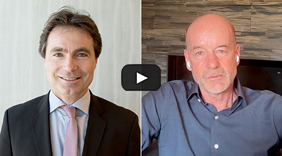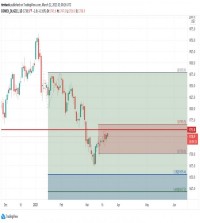|
Practitioner Viewpoint Turning Volatility into Opportunity Several managers offer their perspective on current markets and how to take advantage of changing conditions.
Walt Gallwas and Jeff Malec of Attain Capital: There could be a technical reason for the flat performance. Many programs use some form of market volatility to size their trades and determine how many contracts of each market to trade for an account they manage. In a simple example, if a market has a range of 10 points normally, and you wish to risk 30 points per trade, you could do three contracts in that market (30/10 = 3: risk/volatility = contracts). Now, if the range of that market, which many managers equate to the possible loss or risk in that market, shoots up to 30 points, the manager may only do one contract (30/30 = 1). This works fine and well most of the time, when the market movement is roughly equal to the amount the market is moving on average over the past x number of days. But something unique happened since about mid-December through the end of February. That something is a risk/reward mismatch of sorts, where the potential positive return many CTAs plan on decreased because the average move of the markets they track has roughly been cut in half since the volatility peaks in October and November, while the average range which includes that period has remained high. In this scenario, trades are being placed now with risk based on the highly volatile period, but profit potential is only based on the now lower market moves, which are much smaller than they were back at the peak of the crisis. This mismatch will work itself out in the normal course of business for systematic programs as the algorithms used to measure volatility put more and more weight on recent market conditions Most observers agree that we're not out of the woods in terms of volatility by a long shot. And that should be a good thing for managed futures programs once the risk/reward mismatch outlined above works itself out. Asset Class Comparison
* As of 2/27/09 (1/31/09 for Hedge Funds) Managed Futures = Credit Suisse/Tremont Managed Futures Index, Cash = 3 mo T-Bill rate, Bonds = Vanguard Total Bond Market ETF, Hedge Funds = Credit Suisse/Tremont Hedge Index, Commodities = Reuters/CRB Commodity Index, US Stocks = S&P 500 Index, Real Estate = Dow Jones Wilshire Real Estate Securities Index Ty Andros of TraderView: Volatility will be with us in spades during 2009. As currencies gyrate, investors will run all over the place trying to escape the maelstrom, driving values of stocks, commodities, bonds, energy and other markets up and down. In 2008, the currency markets offered some of the greatest opportunities. Every currency had substantial moves and many times both up and down, as de-leveraging and stampedes of panic swept through the markets at different times. 2009 will be no different. Governments are implementing stimulus plans that don't stimulate, they just consume precious capital. The “Obamination” $920 billion stimulus bill is an 88% permanent expansion of government (new and permanent baseline budget increases and expanded entitlements without the revenues to pay for them) and only a 12% token real investment that will pay itself back from productivity gains. Of course, the $900 billion understates all the costs. Have you ever heard of a government spending item that comes in for less than projected? When looking at currencies, it is important to note that most currencies are actually IOU's from morally and fiscally bankrupt governments. Central bankers want to inflate away debts aggressively. Look for the Swiss franc, US dollar and Japanese yen to be strong as borrowers scramble to pay off their debts and convert the home currency into the currency in which they originally borrowed (yen, dollar, Swiss franc). Once this is done, look for the dollar to reverse probably mid-year and head radically lower. The Swiss will stay stronger, as will the yen; they do not face the money printing requirements in which the US will indulge. James Mahnke of Shield Plus LLC: Such a market-neutral approach combines two opposing positions, such as a long put & long call, and may make money as one position's gain more than offsets the other's loss regardless of market direction. (Typically, a long call makes money when commodity prices rise, and a long put appreciates when prices decline). This market-neutral return profile, having the capability to potentially make money regardless of market direction, gives staying power to the investor. Who knows when the commodity market will spike or collapse? You just want the opportunity to make money when commodities move. |
|
This article was published in Opalesque Futures Intelligence.
|





 RSS
RSS











